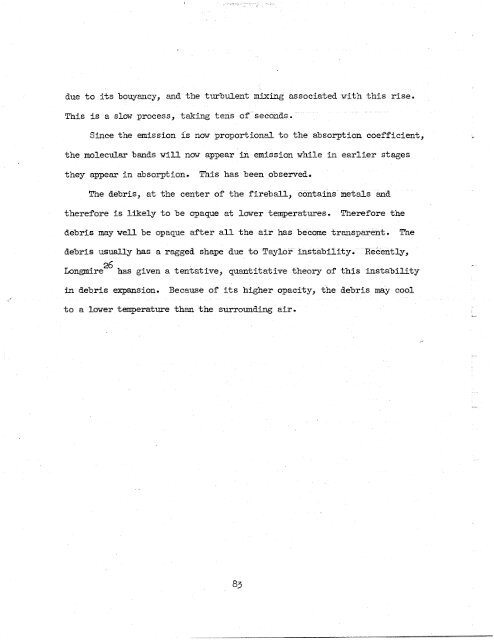Theory of the Fireball
Theory of the Fireball
Theory of the Fireball
Create successful ePaper yourself
Turn your PDF publications into a flip-book with our unique Google optimized e-Paper software.
due to its bouyancy, and <strong>the</strong> turbulent mixing associated with this rise.<br />
Tnis is a slow process, taking tens <strong>of</strong> 'seconds.<br />
Since tine emission is now proportional to <strong>the</strong> absorption coefficient,<br />
<strong>the</strong> molecular bands will now appear in emission while in earlier stages<br />
<strong>the</strong>y appear in absorption. This has been observed.<br />
The debris, at <strong>the</strong> center <strong>of</strong> tne fireball, contains metals and<br />
<strong>the</strong>refore is likely to be opaque at lower temperatures. Therefore <strong>the</strong><br />
debris may well be opaque after all <strong>the</strong> air has become transparent. The<br />
debris usualTy has a ragged shape due to Taylor- instability. Recently,<br />
26<br />
Longmire has given a tentative, quantitative <strong>the</strong>ory <strong>of</strong> this instability<br />
in debris expansion. Because <strong>of</strong> its higher opacity, <strong>the</strong> debris my cool<br />
to a lower temperature than tne surrounding air.
















